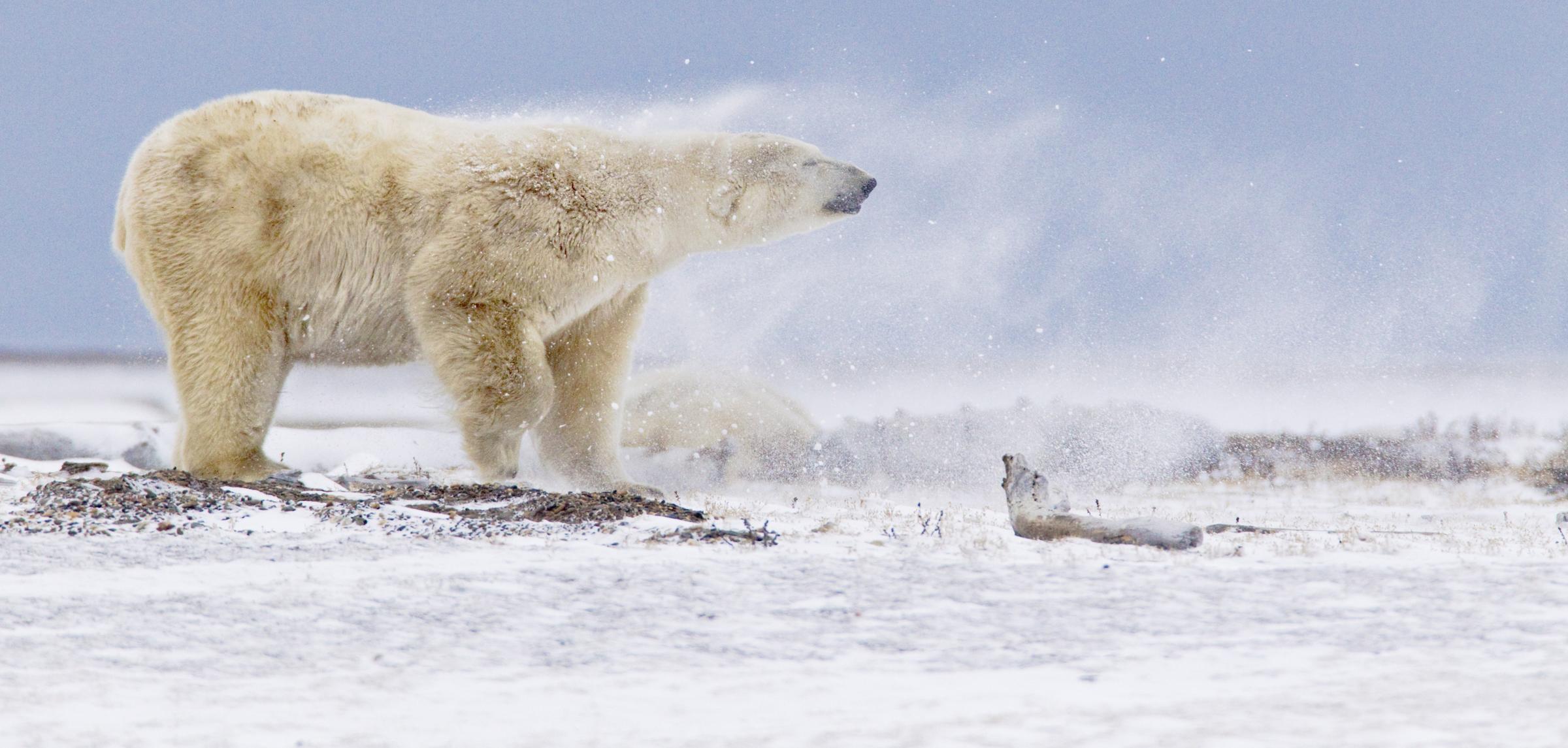Audubon Alaska's Ecological Atlas of the Bering, Chukchi, and Beaufort Seas takes you on a scientific journey through natural history and ecological relationships in the Arctic marine environment.
This comprehensive, transboundary atlas contains over 100 maps of Arctic marine mammals, seabirds, sea ice, subsistence, and more. The Atlas is organized into six sections that build, layer by layer, the ecological foundation of the Bering, Chukchi, and Beaufort seas. Download the full Atlas here.
Physical Setting explores various climatic attributes and the abiotic processes that perpetuate them.
Biological Setting introduces the lower trophic food web.
Fishes describes a range of prominent pelagic and demersal fish species.
Birds highlights a long list of seabirds and waterbirds that regularly use these waters.
Mammals maps out regional use by many cetaceans, pinnipeds, and polar bears.
Human Uses covers subsistence, conservation, and economic drivers in the region.
King Eider: A page from the Ecological Atlas
To produce the maps in the Ecological Atlas, we synthesized data from multiple studies, species, decades, and seas. The data were combined and edited into composite layers to gain a broad-scale perspective on ecological patterns. Species maps, like this King Eider map, visually describe seasonal use, activity, and movement through the project area.
The most conspicuous of the eiders, the King Eider is one of the northernmost breeding birds on the planet. King Eiders breed on the North Slope of Alaska, along the Beaufort Sea coast of Canada, and in coastal Northern Chukotka, Russia. They winter throughout the shallow waters of the Bering Sea Shelf.
Using Science to Conserve the Arctic
At Audubon Alaska, we employ science and state-of-the-art mapping technology to drive our conservation priorities, including protecting the Arctic marine ecosystem.
The significance of the Arctic lies not only in its immense biological productivity but also in the impact the region has on the rest of the world. We are learning more and more that the Arctic affects global weather systems, temperatures, and ocean circulation patterns, and is increasingly influencing global trade, energy extraction, and tourism.
Through the publication of the Ecological Atlas of the Bering, Chukchi, and Beaufort Seas, we aim to inform sustainable management of the Arctic’s natural resources and inspire an appreciation for this spectacular place.
Download the Ecological Atlas here, or print copies are available for purchase for $105, plus $20 for shipping and handling. To order, contact call (907) 276-7034 or email.
How you can help, right now
Donate to Audubon
Help secure the future for birds at risk from climate change, habitat loss and other threats. Your support will power our science, education, advocacy and on-the-ground conservation efforts.
1% for the Planet
We are proud to be part of the 1% for the Planet network. If you own a business, please consider joining 1% for the Planet to support Audubon Alaska’s conservation efforts.




